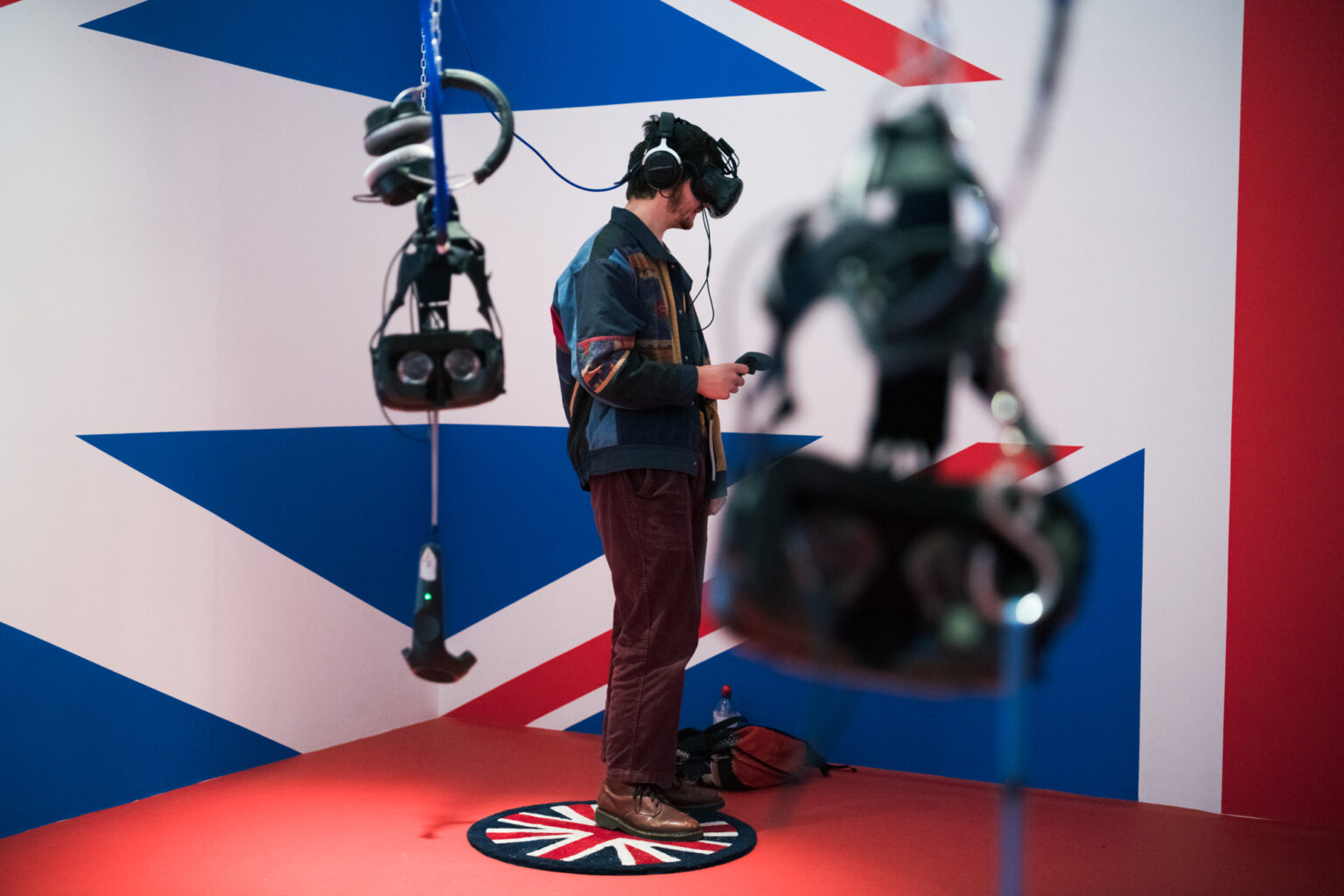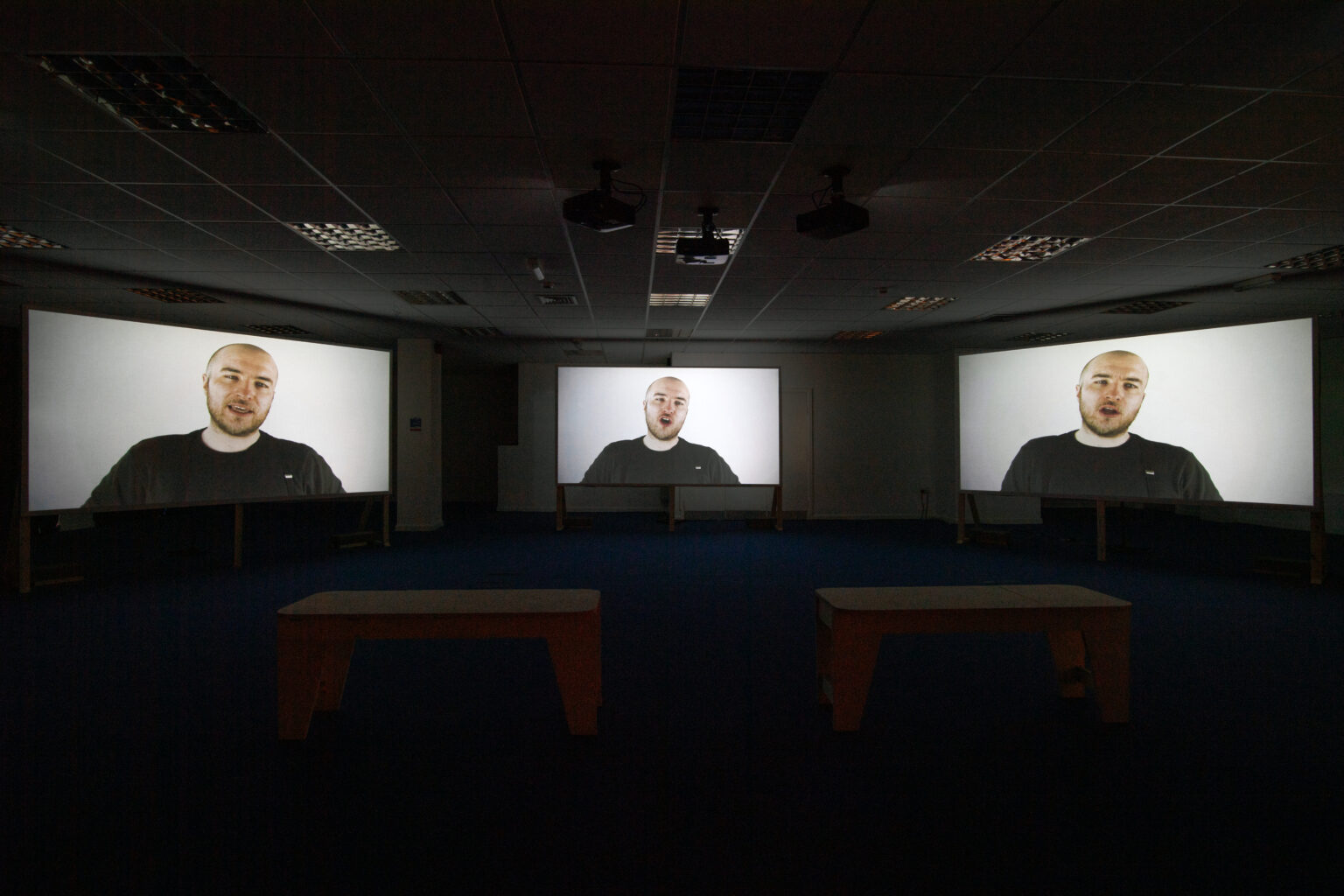Over the past eight years, Middlesbrough Art Week (MAW) has cemented itself as an absolute must-see in the North East’s cultural calendar. Its modus operandi is curating a multi-media contemporary art festival that reinvigorates disused commercial shopping units across the town centre. Derelict shops are transformed into spaces of possibility; encounters with sculpture, installation, video and performance are around every corner, whilst unexpected creative interventions invite the general public to pause and experience a shopping mall beyond its consumerist function.
During these pauses, why not take a seat on one of the many chairs dispersed throughout the exhibition spaces? But don’t mistake them for mere furniture. In the spirit of increased civic engagement, these chairs were designed and made by children at Discovery, Pennyman and Brambles schools in collaboration with Sue Loughlin, Will Hughes and Rhys Baker. This was a nice touch that meant the presence of children’s creativity could be felt throughout the festival.
MAW presented a colossal programme. I visited on Thursday so I can’t comment on the many workshops, performances, screenings, gigs and talks that happened over the course of the week. Instead, this review will be structured around some specific themes: identity, wealth, opportunity and communication.
Given current national and international political events, the presence of Union Jack flags struck a certain chord. Corbin Shaw’s ‘Gaffer Tape Union Jack’ (2025) marked out the design using tape on a dust sheet – materials commonly used by builders and manual labourers – prompting reflections on how masculinity plays into the construction of nationalist values. The accessibility of the materials used evokes a combined sense of populism, gendered labour, and the need for regeneration and renewal. Nearby, another flag by Shaw hangs from the ceiling depicting the St George’s Cross, its sections of white are now an earthy brown and the fabric is delicate and slightly frayed. If individual identity is constantly being constructed through the gathering of experience, why would nationalistic identity be more rigid?
Another British flag appears in 22 Carat Gold, the group exhibition from four British South Asian artists (Alina Akbar, Azraa Motala, Hira Butt and Zara Saghir) whose work traverses sculpture, photography, film and painting to navigate British female identity. One striking photograph from Azraa Motala shows a young woman in white pausing as she walks through a field. In the background are wooded hills and brambles. The sky is overcast, much like her ambiguous expression. In one hand trails a large Union Jack flag. It is not flying high in the breeze but nevertheless it is part of her portrait, almost continuing the flow of her draped clothing. Next to this is another work by Motala, a larger-than-life painting, of a young woman wearing red bridal attire that reveals tracksuit bottoms and trainers underneath. She lounges back in a padded Rococo armchair, but this does not appear to indicate tiredness: instead, I see acceptance, adamance, self-assuredness and power in her body language and expression.
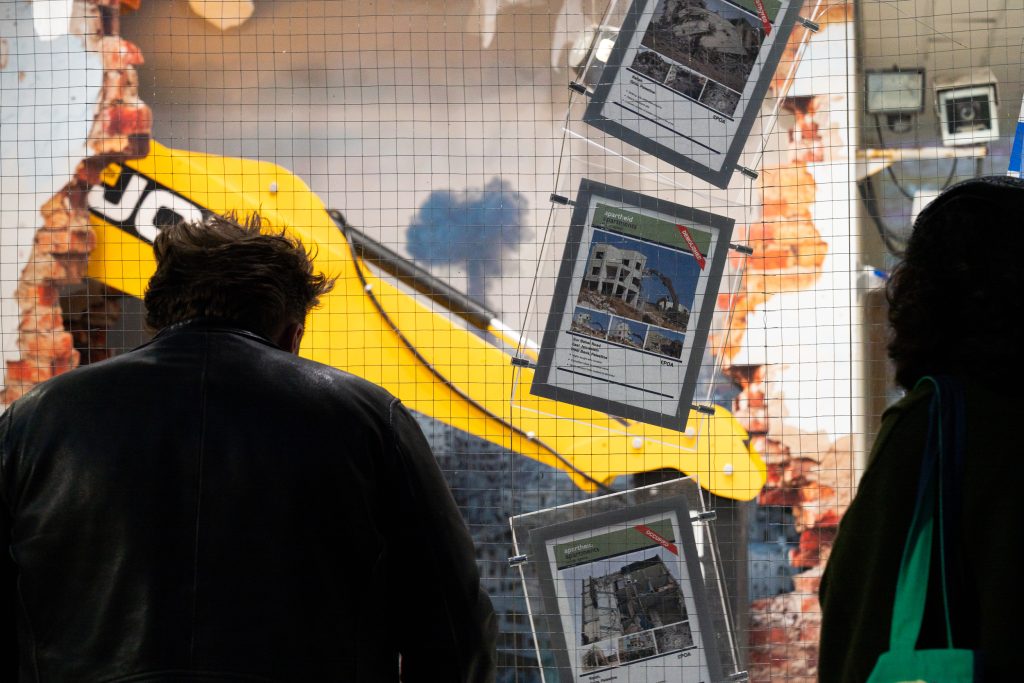
The installation ‘Apartheid Apartments’ (2025), a faux estate agent selling Palestinian land to non-Palestinian buyers, is a persuasive comment on the generation of wealth and power. Made by Darren Cullen, aka Spelling Mistakes Cost Lives, satirical adverts in the window show new builds amongst the rubble of conflict and fenced in by military infrastructure. One reads, ‘planning permission to extend into a neighbour’s garden, security by Israeli troops/heavily armed teens’; another, ‘established in Ancient Times (1983), fully illegal, ethnically cleansed area’. On the wall inside the office is a model of a gun, above it the words ‘Free assault rifle with every new home’.
Also looking at the relationship between site and the creation of wealth is Mike Stubb’s film ‘Machine Learning’ (2025), the title of which is also reversed in the visuals to read as Learning Machine. There is an obvious connection to the North East’s industrial heritage in the film’s focus on the steam engine, yet this audio-visual study looks at its influence in Sydney, Australia, specifically the Boulton and Watts Rotative engine, one of the oldest existing rotative steam engines in the world. Combining close-ups of machinery, archive footage and interviews, it creates nuanced understandings of technological innovation through past and present perspectives. One section describes contradictions within lithium mining: in the name of progress and cleaner energy, indigenous communities with zero carbon footprint are forced off the land to extract minerals. A lyrical dialectic is then set up framing other contradictions: ‘A machine that builds, a machine that destroys. A machine that speaks, a machine that listens… I gave you control then I took it back’.
Sigita Silina’s film ‘Burnout’ (2025) invites sensory resistance and respite to the incessant rhythm of industry and capital, inspired by philosopher Byung-Chal Han’s writings on the ‘achievement society’. The film creates a space of calm and stillness as the protagonists pay attention to rural landscapes marked by former mines, quarries and overgrown railroads. At one point, a voiceover of a photographer reminisces about what first drew them to photography practice and its inherent experimentalism. We hear them describing the many steps and layers to taking a photo and developing it, and how the overbearingness of control and precision in regimes of productivity can be negated through this process.
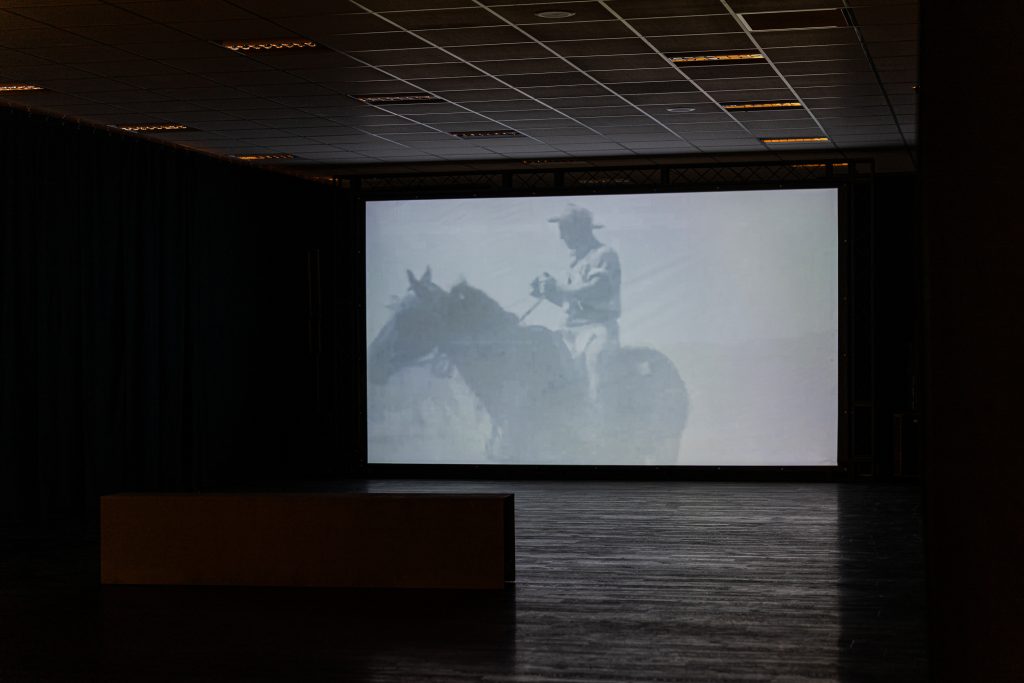
As a side note, as much as I enjoyed these video works, in future the festival would do well to consider access from an auditory perspective. Many of the films were not subtitled and did not offer headphones, which made them difficult to hear at times in the open space.
‘I Trust Pain’ (2025) by Hull-born artist Richie Culver relays a childhood experience of going to a karate competition and, upon arriving, losing the confidence to be there. It’s a story of self-sabotaging opportunity and reflects on being ‘lost in the fear’, the shame felt afterwards of not having courage, and a pattern of thought being formed. As the protagonist says, ‘that pattern has probably followed me for the rest of my life… I think I’ve always lived in fear, I’m not even sure why’.
Articulated in the curatorial framing of this particular exhibition, Weapon & Wound, the introductory wall-text explains how the works expose ‘the contradictions of belonging and alienation, how a football chant, a childhood memory, or a local dialect can carry both shame and pride.’ These contradictions – especially in the current climate of political polarisation, combative identity politics and rising right-wing rhetoric emerging from insecurity and fear – are particularly moving.
Stuart Langley and Carl Truscott both utilise the materiality of mobile phone technology to explore communication, the flow of information, and trust. Langley’s ‘Hold me and show me you love me’ (2025), a gigantic steel-framed heart sculpture sits outside the train station and is adorned with donated old mobile phones to comment on the search for emotional connection via digital technology. Truscott’s wall-piece, ‘Vae Victus’, is part of MAW’s New Graduate Award and is constructed with privacy phone screen protectors. Their reflective quality means that you have to move around the space to see the images printed on them: segments of historical paintings that together create a sense of the Manosphere’s fixation on the Roman Empire. Bringing together these source materials makes me think about conspiratorial thought-processes that join the dots between disparate events, and, through its clever use of screen protectors, the work alludes to the guarded, secretive experience of private chats and Telegram groups.
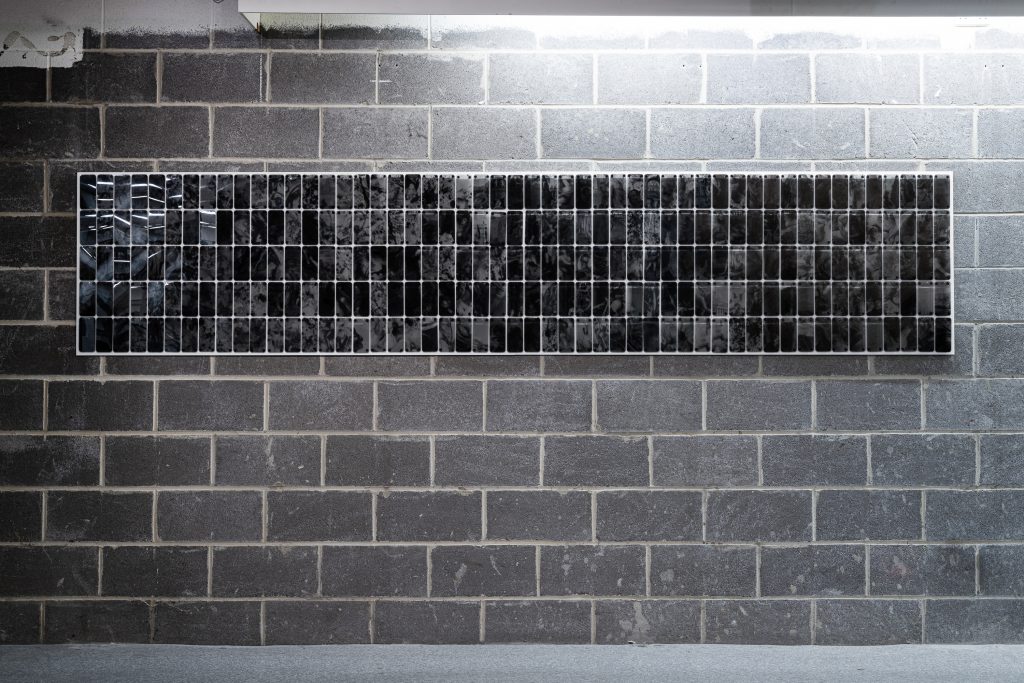
I have to admit, I don’t make the trip from Newcastle to Middlesbrough that often, but I can’t resist the pull of MAW. The festival doesn’t just draw in artists and researchers from the bigger cities. MAW excels in nurturing the curiosity and creative engagement of its local communities. Whilst I was there, I saw school trips of teenagers exploring the festival (one squealed with delight, ‘This looks amazing!’ as she walked into the former B&M store), young lads peeking curiously into an exhibition from British South Asian artists navigating identity, and an older generation taking a break from their shopping to push their walking frames around spaces showcasing experimental work made by young graduates. It was these responses to the art that filled me with optimism as I travelled back to the Toon. Last year, Middlesbrough made national headlines for all the wrong reasons (anti-immigration riots). The successes of MAW unfortunately won’t attract the same level of public attention, but they really should as they show off Middlesbrough’s appetite for creativity, exploration, newness, eccentricity, and cultural diversity. MAW has, without a doubt, improved the town and that is something to be proud of.
Kin is an artist, writer and PhD researcher based in Newcastle.
Middlesbrough Art Week ran from September 25th – October 4th 2025, in multiple venues across Middlesbrough.
Stuart Langley ‘Hold me and show me you love me’ was commissioned as part of ‘We Shall Be’. WE SHALL BE is a Navigator North programme delivered in collaboration with, Middlesbrough Council, TransPennine Express, Commerce Chambers and FORGED (Middlesbrough Art Week and Navigator North-funded programme through Tees Valley Combined Authority) with funding from Arts Council England.
This review is supported by Middlesbrough Art Week.
Published 24.10.2025 by Lesley Guy in Reviews
1,566 words



